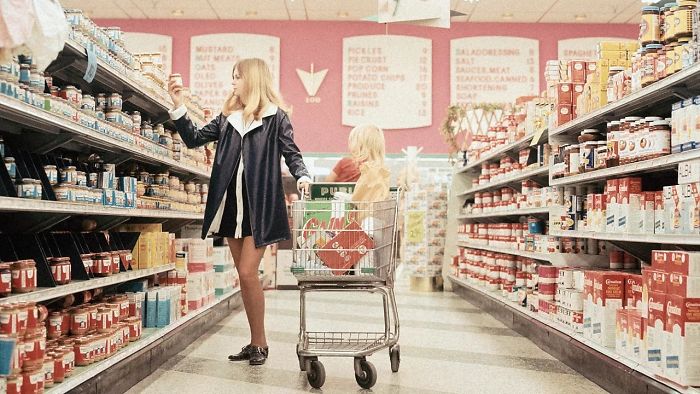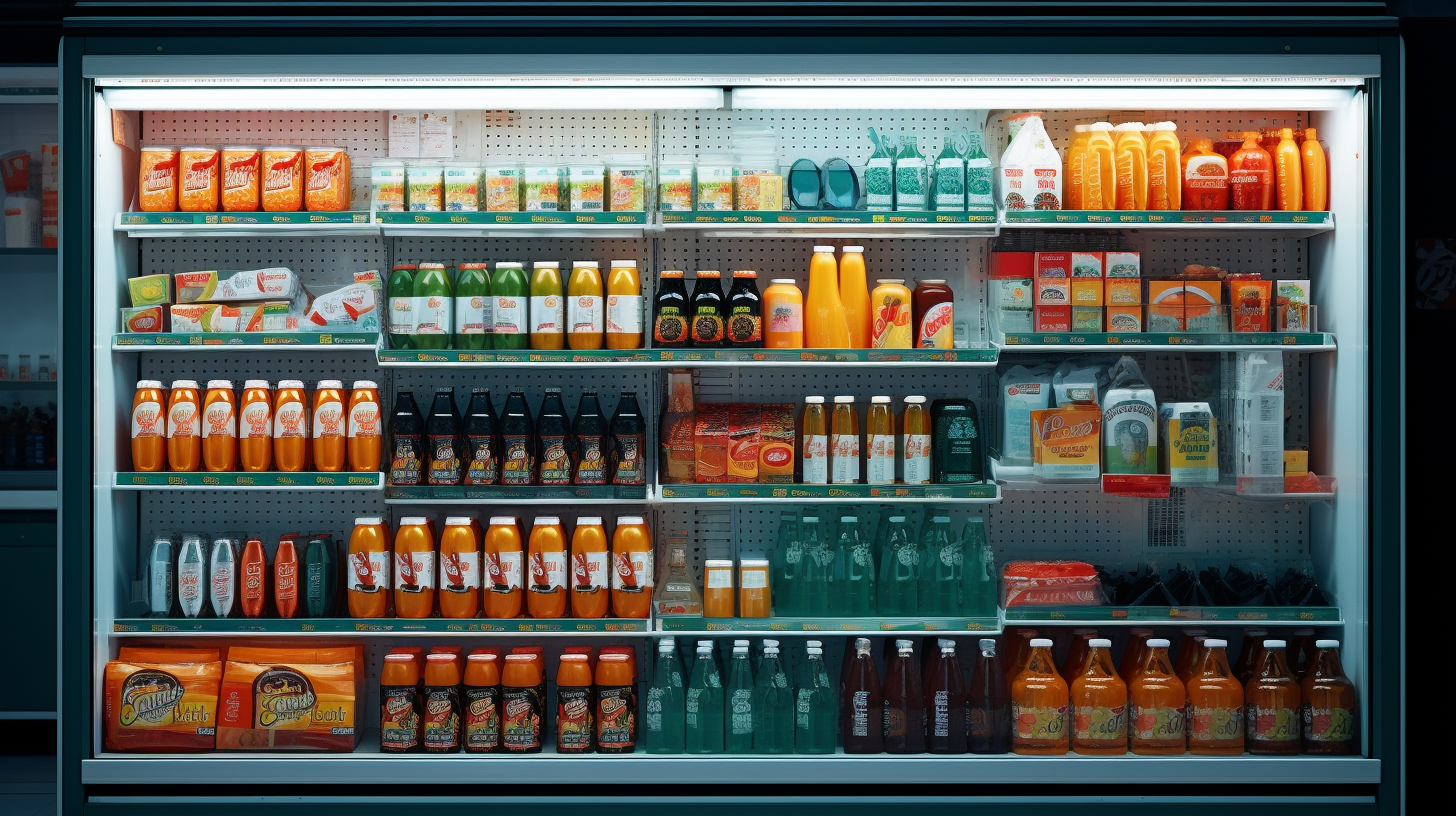The art of planograms — also known as plano-grams, plan-o-grams, and “POGs” — can be just that, an art. A fundamental process for any retailer in the brick-and-mortar arena, planogram design can substantially alter how you plan your business and how it’s perceived in the marketplace, and ultimately, by your customer when they’re scanning the aisle.
In 1962, with inflation on the rise, Walmart, Target, and Kmart all opened to attract a new kind of "discount shopper." Sam Walton opened Walmart in the South, and rapidly grew its footprint through its widespread use of localization and standardization of stores, but it was Target, who in 1974 brought planograms to bear. The innovative space planning software provided uniformity and consistency across all their 80-odd U.S. locations, and by 1975, they were the leading division of Dayton-Hudson, their parent company. Their thinking? With their first stores outside of Minnesota — in places like Denver, St. Louis, Dallas, and Houston — they needed to ensure that the customer experience was paramount. Planograms gave them a scalable way to accomplish this. This was especially important as travel became more popular in the country. With new interstates and highways connecting major Midwest cities, it was important that if a Target customer from one city entered one in another, they’d have a similar look, feel, and floor plan.
Although Target originated the planogram concept, it was the folks at Kmart who would ultimately use planograms to ensure optimal product placement and stocking levels. They also added their own contribution to the planogram idea: they would use them to better showcase their actual products on shelves. In the late 1970s, with the burgeoning boom of retail dominance — led by both of their aspirational competition, Sears Roebuck & Co. and the now-public Wal-Mart Stores who delighted in using their "make it better" approach against them— Kmart was busy opening new retail space at an astounding rate (17 million square feet in 1976 alone) to compete with them.
Hailed as a new “modern retailer” that put savings at the forefront, they had one goal: be number one. Kmart leadership knew they couldn’t do that without being exact, methodical, and practical. Rather than just showing products clearly on their shelves, they began utilizing planograms to ensure space management, shelf planning, and, ultimately, savings. Transferring the exact amount of products intra-store, using only what is needed, and saving time, money, and resources along the way. As Target’s in-house historian, Tony Jahn, said, “[It’s] the overlying outline of what a store is today — that’s one of the great things planograms gave us. It gave structure to our business.”
"I have always been driven to buck the system, to innovate, to take things beyond where they've been."
During this time, Walmart’s unprecedented growth across the South, "using Kmart as a lab” as Sam Walton boldly once stated (When Kmart would try and fail, Walton would learn and make it better), had them nearing over 51 stores, and their mindset was how to best standardize the process for mass delivery, fulfillment, and process, all while localizing efforts would help customize the local Walmart to embolden it as the one store you needed in the neighborhood. “I have always been driven to buck the system,” said Walton. “To innovate, to take things beyond where they've been."
"Taking them beyond where they've been" is what they ended up indeed doing; using visual merchandising and the planogram model to customize local experiences in their individual stores across the Southern states. Without the use of planograms, this process would not have been manageable, much less scaleable.
While Target focused on consistency across new stores, and Walmart on innovating the local model, Kmart was busy focusing on visually merchandising deep discounts to compete.

Things have changed of course. Kmart and Sears are all but vanished. Walmart has been #1 since 1991, and planograms have been part of retail businesses ever since — not just multi-brand retailers like Best Buy, Walmart, Home Depot, and Macy’s, where without this fundamental aspect of space planning, their success is unfathomable — but even down smaller, yet national pure-play brands like Restoration Hardware, Pottery Barn, and more. In fact, nearly every retail wall, shelf, or endcap you’ve seen — from your local mini-mart to the service wall in your car dealership — utilizes some aspect of shelf planning.
Due to its ubiquity, but also to its complexity, automating the shelf planning process has been incumbent upon retailers who want to succeed as much as Walmart, Target, and Kmart did fifty years earlier. But how? With over 1,800 Target stores, nearly 1,000 Best Buy stores, and over — get this — 11,000 Walmart stores globally, shelf planning automation is more important today than ever.
Benefits of Planogram Automation
Planogram automation has become a necessity. If you’re the category manager at Anheuser-Busch for Budweiser®, how do you adequately and appropriately plan the shelving of not just Budweiser, but Bud Lite®, Bud Lite Lime, Bud Light Seltzer, and so on? And once you’ve created a successful planogram for one store, how do you replicate it in hundreds of retail outlets and dozens of big-box retailers — each with thousands of individual stores?
Improved speed
When you consider that each store has its own shelf space, size, depth, etc., you can see where automating the process can be a lifesaver. Since there’s not just one look-and-feel across all stores across the nation, the process can be daunting. Consider the beer example again: Most retailers place the mass-produced domestic beers together, then the microbrews, then the local beers. If each local IPA is only available to a select city or region, how do you correctly plan for stores in that area, when the ever-changing rotation of available products is unending? An automated planogram is needed to help each retailer know where items should go (and how many of them).
Consistency
The problem lies in the files associated with these massive planograms, which are usually stored in a cloud-based server or with flat files locally, traditionally stored on someone’s computer. Both options have pros and cons, respectively. The database route? Licensing fees and costs, even for a few users, can be high. On the other hand, while flat files can be beneficial, code changes need to be completed manually or in bulk with script editors, and coding ability can vary greatly by individual category managers or planogram creators. And even if a manager is proficient at script building, the process can be tedious and time-consuming.
Accuracy
Since the average user on a core team can find it challenging to make changes to planogram software or create tables, charts, or formulas, let alone write scripts and define business rules, the most effective solution is to automate the planning with a turnkey solution.
What is the best planogram solution for your business?
There are quite a few solutions to this problem, including in-depth code changes, low-code, and no-code solutions. Sure, space planning software has limitless possibilities, but it still requires advanced coding. And while even a planogram generator works great, in the case of an enterprise company, there will be considerable time, money, and resources needed to adjust the many planograms that need to flow out of the business every day. Expensive coding solutions just aren’t the ticket.
Low-Code Planogram Solutions
This brings us to “low-code” platforms, solutions that give you a way to design and develop software applications quickly and with minimal coding. These options allow teams to be more business- and retail-savvy, and best of all, they don’t require users to be skilled coders. This can take the process down from months to weeks, and the lift is considerably lighter. However, the cost can still skyrocket depending on the scale of the planogram family.
No-Code Planogram Solutions
No-code platforms, such as Shelf IQ™ planogram software by Nuqleous, offer easy drag-and-drop solutions for shelf planning management. For those who don’t want to spend valuable time keeping thousands of planograms up to date, this can be an easy win that costs significantly less than utilizing cloud-based database files or storing planogram designs in flat files that require the do-it-yourself manual coding.
Automating the planogram itself is only part of the equation, however. Analyzing, evaluating, and optimizing each planogram, or clusters of them is equally as important. The ideal planogram software will not only plan and automate, it will give you the ability to accurately analyze your planograms as well.
From determining the eye-level awareness to the way a product is placed (and in many cases, what it is displayed next to), a planogram helps the visual merchandisers and stockers at retail stores understand how the brand wants their product displayed and how many are needed for a particular space. Space planning is a vital aspect of retail, grocery, and even lifestyle and apparel stores. For your customers and end consumers to ultimately understand your product’s benefits, they need to see it properly displayed in the ideal position on a shelf. Sure, we’re not all gunning to be in Sears’ pole position anymore, but the goal should still be growth and to be number one in your sector. Help yourself and your business by utilizing automated shelf planning software to hit those goals.



